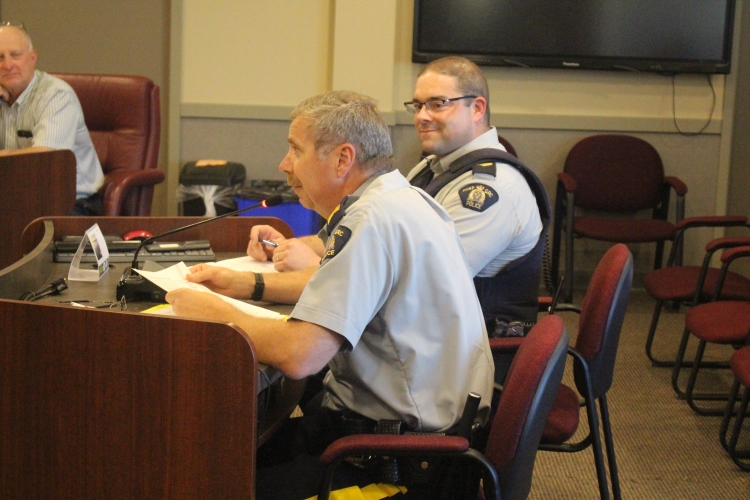Swift Current has followed in the province's footsteps as the city's Crime Severity Index (CSI) decreased as well.
The Crime Severity Index is put out by Statistics Canada, and refers to a measure of police-reported crime that reflects the relative seriousness of individual offences, and tracks changes in crime severity.
Saskatchewan's CSI decreased by three per cent, making it just one of four provinces to see a decrease. Swift Current saw a more significant reduction of 15 per cent, bringing it down to 83.
Gary Hodges, staff sergeant for the Swift Current City RCMP, said that overall it is great to see the numbers decrease.
"These aren't the be-all, end-all. You can have an incident perhaps in a house where there are some people who are abusing drugs, and there are maybe four or five assaults that happen, and they are fairly serious. They can skew these numbers," he said.
"Overall, it is encouraging when we look at crime from a year-to-year within the community and how it's impacted the community."
The city's Violent Crime Severity Index currently sits at 78.4, down 10 per cent, and the Non-Violent CSI is at 84.5, down 17 per cent.
"When we talk about the violent crime severity index in Swift Current, we are looking at offences such as sexual assault, common assault, uttering threats, robberies, assault with a weapon or causing bodily harm. Those are the more common things that we see here in Swift Current that is going to impact the violent crime severity index," Hodges said.
"When we are talking about trends in non-violent crime severity index, we are talking about frauds, breaking and entering, mischief, theft under $5,000 and methamphetamine trackings."
A look at how Swift Current's numbers compare to Saskatchewan and Canada:
| Swift Current | Saskatchewan | Canada | |
| Crime Severity Index 2018 | 83 | 139 | 75 |
| % change in CSI | -15 | -3 | +2 |
| Violent CSI | 78.4 | 138 | 82 |
| % change in Violent CSI | -10 | -5 | +1 |
| Non-violent CSI | 84.5 | 139 | 72 |
| % change in Non-violent CSI | -17 | -2 | +2 |
Hodges said that the RCMP couldn't take all the credit for the decrease.
"When we look at the root causes of crime, there are four big underlying issues. There are addictions, gang issues, poverty, and homelessness."
We have our part to play, but when you look at those four societal issues, mental health (services), the health district as a whole, social services, all those other ministries that contribute to things within the community. It's a group effort that ties together so we can all take credit in the decrease."
Swift Current's CSI over the past years has been 66, 77, 91, and 89. He said that, for Swift Current, he feels that overall they are heading in the right direction.
"There was a constant increase - now we've seen a drop to 83, which is a good sign overall," he said. "The trend is reversing. That is what we want to try and focus on. Not to say it will continue, because you only need one or two serious incidents to put that into a different light, but it is positive to see it decline."
Another stat of note is the city's clearance rate. The clearance rate represents the proportion of criminal incidents solved by the police.
Swift Current has a clearance rate for violent crimes of 90.9 per cent. The clearance rate for non-violent crimes sits at 41 per cent. Both are above the provincial and national numbers in 2018. Saskatchewan has a clearance rate for violent crimes of 62.99 while Canada had a rate of 61.15. For non-violent crimes, Saskatchewan's rate was 34.15, and Canada's was 28.99.
Hodges said that the reason that violent crimes have such a higher rate than non-violent crimes is that crimes against people are given priority.
"There's a lot of times thefts and damage to the property go unsolved because there is no witness to them and there's no evidence to them," he said. "Where crimes are against a person, we have a victim nine times out of 10 that can tell us what happened."
He said that working with the community, those rates can go up.
"It takes a community to raise a child, as they say, we look at it as it takes a community to solve crime too," Hodges said. "We are always looking for community input and assistance from the community."
Hodges added that he encourages anyone who witnesses, or has witnessed, a crime to come forward and report it to help out.















